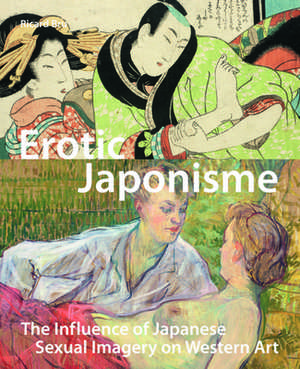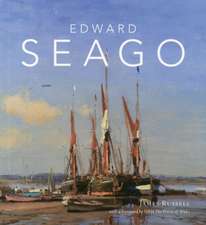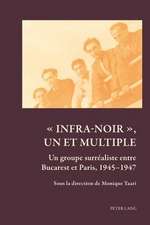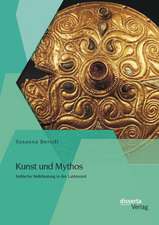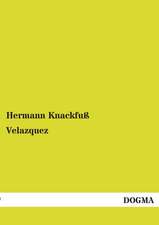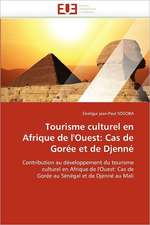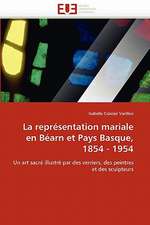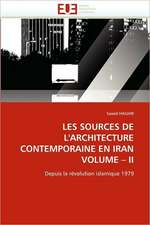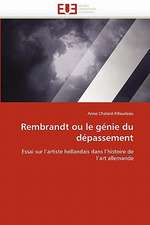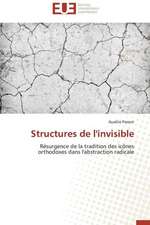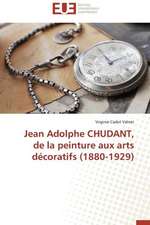Erotic Japonisme: The Influence of Japanese Sexual Imagery on Western Art
Autor Ricard Bruen Limba Engleză Paperback – 12 dec 2013
By focusing on a less-known aspect of Japonisme, which up until now was not investigated seriously, Bru documents and presents how the erotic shunga prints seduced a great number of people, converting thus into a fertile and original source of inspiration in Europe during the end of the nineteenth century, through the work of critics and writers, such as Goncourt, Huysmans or Zola, and of artists, such as Degas, Rodin, Toulouse-Lautrec, Rops, Klimt or Picasso.
Ricard Bru (Ph.D. in Art History) has been a professor of Nineteenth-Century Art History at the University of Barcelona and he is currently working for the Institute of Culture of Barcelona. He curated the resent exhibitions "Secret Images: Picasso and the Japanese Erotic Print" (2009), and "Japonisme: The Fascination of Japanese Art" ("Japonismo: La fascinación por el arte japonés") (2013).
Preț: 472.74 lei
Preț vechi: 556.16 lei
-15% Nou
Puncte Express: 709
Preț estimativ în valută:
90.47€ • 94.10$ • 74.69£
90.47€ • 94.10$ • 74.69£
Carte disponibilă
Livrare economică 24 martie-07 aprilie
Preluare comenzi: 021 569.72.76
Specificații
ISBN-13: 9789004258327
ISBN-10: 9004258329
Pagini: 182
Dimensiuni: 244 x 295 x 15 mm
Greutate: 1.09 kg
Editura: Brill
Colecția Brill | Hotei
ISBN-10: 9004258329
Pagini: 182
Dimensiuni: 244 x 295 x 15 mm
Greutate: 1.09 kg
Editura: Brill
Colecția Brill | Hotei
Descriere
At its height in the late nineteenth and early twentieth centuries, Japonisme had a tremendous impact on Western art. In this publication, author Ricard Bru approaches the cultural phenomenon of Japonisme from an innovative standpoint. He presents an in-depth discussion of the influence of Japanese printed erotic imagery by ukiyo-e masters such as Kitagawa Utamaro, Katsushika Hokusai, and Utagawa Hiroshige on European artists, including Edgar Degas, Auguste Rodin, Henri de Toulouse-Lautrec, Gustav Klimt and Pablo Picasso, as well as writers, critics, and collectors, such as Edmond de Goncourt, Joris-Karl Huysmans, and Émile Zola. With over 160 color illustrations sourced from public and private collections, Erotic Japonisme demonstrates the rich artistic dialogue that existed between Europe and Japan.
Notă biografică
Ricard Bru (Ph.D. in Art History) has been a professor of Nineteenth-Century Art History at the University of Barcelona and he is currently working for the Institute of Culture of Barcelona. He curated the resent exhibitions "Secret Images: Picasso and the Japanese Erotic Print" (2009), and "Japonisme: The Fascination of Japanese Art" ("Japonismo: La fascinación por el arte japonés") (2013).
Cuprins
Preface and Acknowledgments
Notes to the Reader
Introduction
The Eighteenth Century and Romantic Orientalism
The Arrival and First Appraisals of Shunga in Mid Nineteenth-Century Europe
1 The Western Encounter with Shunga
The Early European Discovery of Shunga
Sporadic Encounters During the Edo Period
The Opening of Japan and the Spread of Shunga in Europe
2 Collections of Japanese Erotic Art in Europe and Their Dissemination
The First Parisian Collectors
Shunga in Western Publications
3 The Impact of Shunga on European Art
The Appeal to Artists
The French Milieu
Octopuses of Pleasure and Death
The Belgian Case
The British Contribution
The European Diffusion of Shunga at the Turn of the Century
Shunga as an Enduring Influence in Twentieth-Century Art
Epilogue
Endnotes
Bibliography
Photography Credits
Index
Notes to the Reader
Introduction
The Eighteenth Century and Romantic Orientalism
The Arrival and First Appraisals of Shunga in Mid Nineteenth-Century Europe
1 The Western Encounter with Shunga
The Early European Discovery of Shunga
Sporadic Encounters During the Edo Period
The Opening of Japan and the Spread of Shunga in Europe
2 Collections of Japanese Erotic Art in Europe and Their Dissemination
The First Parisian Collectors
Shunga in Western Publications
3 The Impact of Shunga on European Art
The Appeal to Artists
The French Milieu
Octopuses of Pleasure and Death
The Belgian Case
The British Contribution
The European Diffusion of Shunga at the Turn of the Century
Shunga as an Enduring Influence in Twentieth-Century Art
Epilogue
Endnotes
Bibliography
Photography Credits
Index
Recenzii
“If there was a gap in the literature on Japonisme regarding shunga, it has now been filled by Bru’s handsomely designed and illustrated books, which is indeed an important addition to the literature on the subject.” Max Put, independent scholar in Andon, issue 96, July 2014.
“… Richard Bru’s Erotic Japonisme brings an outstanding publication to the academic field. … This innovative and challenging book will not only lead Japonisme studies into a new phase, but will also make us more sensitive to cultural differences between Japan and the West.”
Atushi Miura, In: Print Quarterly, Vol. 4 (December 2015), pp. 473-476.
"Richard Bru’s study Erotic Japonisme: The Influence of Japanese Sexual Imagery on Western Art, is one of the few monographs to deal explicitly with the influence from shunga on Western art. […] Pulling from collections all over the world, reproducing images in gorgeous full color, and bridging scholarly dialogue between Japan and Europe, Bru’s monograph emphasizes the import of transnationalism and erotica in the story of Modernist artistic production."
Michael Toole in Japan Review Nr. 28 (2015), pp. 253-225.
Erotic Japonisme eloquently chronicles the importance of this important sub-genre of the ukiyo-e tradition in western art. By citing the evidence of documents, correspondence, and collections, and marshaling astute visual analyses, Ricard Bru offers an engaging and erudite account of how the awareness of Japanese erotic traditions served as a catalyst for change in a world already primed for cultural revolution. … [The book] approaches its subject with seriousness and objectivity. Its impeccable methodology, rational organizational structure, and clear prose are models for scholars in all fields. … [And it] provides a long overdue reassessment of the impact of shunga prints. This important book not only elucidates and contextualizes the western encounter with Japanese erotic imagery, but also suggests directions for further study. Laurinda S. Dixon, Syracuse University, In: Journal of Japonisme 1.1 (2016), pp. 139-143.
“… Richard Bru’s Erotic Japonisme brings an outstanding publication to the academic field. … This innovative and challenging book will not only lead Japonisme studies into a new phase, but will also make us more sensitive to cultural differences between Japan and the West.”
Atushi Miura, In: Print Quarterly, Vol. 4 (December 2015), pp. 473-476.
"Richard Bru’s study Erotic Japonisme: The Influence of Japanese Sexual Imagery on Western Art, is one of the few monographs to deal explicitly with the influence from shunga on Western art. […] Pulling from collections all over the world, reproducing images in gorgeous full color, and bridging scholarly dialogue between Japan and Europe, Bru’s monograph emphasizes the import of transnationalism and erotica in the story of Modernist artistic production."
Michael Toole in Japan Review Nr. 28 (2015), pp. 253-225.
Erotic Japonisme eloquently chronicles the importance of this important sub-genre of the ukiyo-e tradition in western art. By citing the evidence of documents, correspondence, and collections, and marshaling astute visual analyses, Ricard Bru offers an engaging and erudite account of how the awareness of Japanese erotic traditions served as a catalyst for change in a world already primed for cultural revolution. … [The book] approaches its subject with seriousness and objectivity. Its impeccable methodology, rational organizational structure, and clear prose are models for scholars in all fields. … [And it] provides a long overdue reassessment of the impact of shunga prints. This important book not only elucidates and contextualizes the western encounter with Japanese erotic imagery, but also suggests directions for further study. Laurinda S. Dixon, Syracuse University, In: Journal of Japonisme 1.1 (2016), pp. 139-143.
